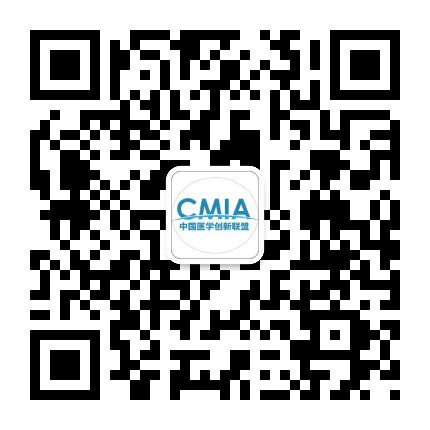(重磅)美国首例新冠病毒确诊病例康复全记录(中英文)
摘要
在中国武汉开始的新型冠状病毒(2019-nCoV)爆发迅速蔓延,现已在多个国家确诊。我们报告了在美国确认的首例2019-nCoV感染病例,并描述了该病例的鉴定,诊断,临床过程和管理,包括患者在病情第9天表现为肺炎时的最初轻度症状。
该案例强调了临床医生与地方,州和联邦各级公共卫生当局之间密切协作的重要性,以及需要快速传播与这种新发感染患者的护理有关的临床信息的需求。
2019年12月31日,中国报告了与湖北省武汉市华南海鲜批发市场有关的人群中的肺炎病例。
2020年1月7日,中国卫生当局确认该簇与新型冠状病毒2019-nCoV有关。尽管最初报道的病例与武汉市海鲜市场的暴露有关,但当前的流行病学数据表明,正在发生2019-nCoV人际传播。
截至2020年1月30日,在至少21个国家/地区报告了9976例病例,包括2020年1月20日报道的美国首例确诊的2019-nCoV感染病例。
全球范围内正在进行调查,以更好地了解传播动态和临床疾病范围。本报告描述了在美国确认的首例2019-nCoV感染的流行病学和临床特征。
案例报告
2020年1月19日,一名35岁的男子出现在华盛顿州斯诺霍米什县的一家急诊诊所,有4天的咳嗽和主观发烧史。病人到诊所检查时,在候诊室戴上口罩。等待约20分钟后,他被带到检查室接受了提供者的评估。
他透露,他在中国武汉探望家人后于1月15日返回华盛顿州。该患者表示,他已从美国疾病控制与预防中心(CDC)收到有关中国新型冠状病毒暴发的健康警报,由于他的症状和最近的旅行,他决定去看医生。
图1-2020年1月19日(疾病第4天)的后前胸和外侧胸片
除了高甘油三酸酯血症的病史外,该患者还是其他健康的不吸烟者。体格检查发现患者呼吸环境空气时,体温为37.2°C,血压为134/87 mm Hg,脉搏为每分钟110次,呼吸频率为每分钟16次,氧饱和度为96%。肺部听诊显示有支气管炎,并进行了胸片检查,据报道未发现异常(图1)。
甲型和乙型流感的快速核酸扩增测试(NAAT)为阴性。获得了鼻咽拭子标本,并通过NAAT将其送去检测病毒性呼吸道病原体。
据报道在48小时内对所有测试的病原体均呈阴性,包括甲型和乙型流感,副流感,呼吸道合胞病毒,鼻病毒,腺病毒和已知会导致人类疾病的四种常见冠状病毒株(HKU1,NL63、229E和OC43) )。
根据患者的旅行历史,立即通知地方和州卫生部门。华盛顿卫生部与紧急护理临床医生一起通知了CDC紧急行动中心。
尽管该患者报告说他没有去过华南海鲜市场,也没有报告在去中国旅行期间与患病者有任何接触,但疾病预防控制中心的工作人员同意有必要根据当前的疾病预防控制中心对患者进行2019-nCoV测试。
根据CDC指南收集了8个标本,包括血清,鼻咽和口咽拭子标本。标本采集后,患者被送往家庭隔离,并由当地卫生部门进行积极监测。
2020年1月20日,疾病预防控制中心(CDC)确认患者的鼻咽和口咽拭子通过实时逆转录酶-聚合酶链反应(rRT-PCR)检测为2019-nCoV阳性。
在疾病预防控制中心的主题专家,州和地方卫生官员,紧急医疗服务以及医院领导和工作人员的配合下,患者被送往普罗维登斯地区医疗中心的空气隔离病房进行临床观察,并跟随疾病预防控制中心的医护人员有关接触,飞沫和空中防护措施的建议,并带有护目镜。
入院时患者报告持续咳嗽,有2天的恶心和呕吐史。他报告说他没有呼吸急促或胸痛。生命体征在正常范围内。体格检查发现患者粘膜干燥。其余的检查通常不明显。
入院后,患者接受了支持治疗,包括2升生理盐水和恩丹西酮以缓解恶心。
图2-根据疾病日和住院日(2020年1月16日至2020年1月30日)的症状和最高体温
在住院的第2至5天(患病的第6至9天),患者的生命体征基本保持稳定,除了出现间歇性发烧并伴有心动过速(图2)。患者继续报告非生产性咳嗽,并出现疲倦。
在住院第二天的下午,患者排便通畅,腹部不适。晚上有第二次大便稀疏的报道。收集该粪便的样品用于rRT-PCR测试,以及其他呼吸道标本(鼻咽和口咽)和血清。粪便和两个呼吸道标本后来均通过rRT-PCR检测为2019-nCoV阳性,而血清仍为阴性。
在此期间的治疗在很大程度上是支持性的。为了进行症状处理,患者需要根据需要接受解热疗法,该疗法包括每4小时650 mg对乙酰氨基酚和每6小时600 mg布洛芬。在住院的前六天,他还因持续咳嗽而服用了600毫克愈创甘油醚和约6升生理盐水。
表1-临床实验室结果
患者隔离单元的性质最初仅允许即时医疗点实验室测试;从医院第3天开始可以进行全血细胞计数和血清化学研究。
在医院第3天和第5天(疾病第7天和第9天)的实验室结果反映出白细胞减少症,轻度血小板减少症和肌酸激酶水平升高(表1)。
此外,肝功能指标也有所变化:碱性磷酸酶(每升68 U),丙氨酸氨基转移酶(每升105 U),天冬氨酸氨基转移酶(每升77 U)和乳酸脱氢酶(每升465 U)的水平分别为:在住院的第5天所有升高。鉴于患者反复发烧,在第4天获得血液培养;迄今为止,这些都没有增长。
图3-2020年1月22日(胸部第7天,医院第3天)的后前胸和外侧胸片
图4-2020年1月24日(胸部第5天,医院第9天)的后前胸X线片
据报道,在医院第3天(患病第7天)拍摄的胸部X光片未显示浸润或异常迹象(图3)。
但是,从医院第5天晚上(患病第9天)晚上进行的第二次胸部X光片检查显示,左肺下叶有肺炎(图4)。
这些影像学发现与从医院第5天晚上开始的呼吸状态变化相吻合,当时患者在呼吸周围空气时通过脉搏血氧饱和度测定的血氧饱和度值降至90%。
在第6天,患者开始接受补充氧气,该氧气由鼻导管以每分钟2升的速度输送。考虑到临床表现的变化和对医院获得性肺炎的关注,开始使用万古霉素(1750 mg负荷剂量,然后每8小时静脉注射1 g)和头孢吡肟(每8小时静脉注射)治疗。
图5-前后胸部X光片,2020年1月26日(疾病第十天,医院第六天)
在医院第6天(患病第10天),第四次胸部X射线照片显示两个肺中都有基底条状混浊,这一发现与非典型肺炎相符(图5),并且在听诊时在两个肺中都出现了罗音。
鉴于放射线影像学发现,决定给予氧气补充,患者持续发烧,多个部位持续阳性的2019-nCoV RNA阳性,以及发表了与放射线性肺炎发展一致的严重肺炎在该患者中,临床医生富有同情心地使用了研究性抗病毒治疗。
静脉注射瑞德昔韦(一种正在开发的新型核苷酸类似物前药)在第7天晚上开始,但未观察到与输注有关的不良事件。在对甲氧西林耐药的金黄色葡萄球菌进行了连续的降钙素原水平和鼻PCR检测后,在第7天晚上停用万古霉素,并在第二天停用头孢吡肟。
在医院第8天(患病第12天),患者的临床状况得到改善。停止补充氧气,他在呼吸周围空气时的氧饱和度值提高到94%至96%。先前的双侧下叶罗音不再存在。他的食欲得到改善,除了间歇性干咳和鼻漏外,他没有症状。
截至2020年1月30日,患者仍住院。他有发热,除咳嗽外,所有症状均已缓解,咳嗽的程度正在减轻。
方法
标本采集
根据CDC指南获得用于2019-nCoV诊断测试的临床标本。用合成纤维拭子收集了12个鼻咽和口咽拭子标本。
将每个拭子插入包含2至3 ml病毒转运介质的单独无菌管中。将血清收集在血清分离管中,然后根据CDC指南进行离心。尿液和粪便标本分别收集在无菌标本容器中。样品在2°C至8°C之间储存,直到准备好运送至CDC。
在疾病的第7、11和12天收集了重复进行的2019-nCoV测试的标本,包括鼻咽和口咽拭子,血清以及尿液和粪便样本。
2019-NCOV的诊断测试
使用从公开发布的病毒序列发展而来的rRT-PCR分析法测试了临床标本。与先前针对重症急性呼吸综合征冠状病毒(SARS-CoV)和中东呼吸综合征冠状病毒(MERS-CoV)的诊断方法相似,它具有三个核衣壳基因靶标和一个阳性对照靶标。该测定的描述为RRT-PCR面板引物和探针和序列信息中可用的CDC实验室信息网站2019-nCoV上。
遗传测序
2020年1月7日,中国研究人员通过美国国立卫生研究院GenBank数据库和全球共享所有流感数据倡议(GISAID)数据库共享了2019-nCoV的完整基因序列;随后发布了有关隔离2019-nCoV的报告。
从rRT-PCR阳性标本(口咽和鼻咽)中提取核酸,并在Sanger和下一代测序平台(Illumina和MinIon)上用于全基因组测序。
使用5.4.6版的Sequencher软件(Sanger)完成了序列组装。minimap软件,版本2.17(MinIon);和freebayes软件1.3.1版(MiSeq)。将完整基因组与可用的2019-nCoV参考序列(GenBank登录号NC_045512.2)进行比较。
结果
2019-NCOV的标本测试
表2-2019年新型冠状病毒(2019-nCoV)的实时逆转录酶-聚合酶-链反应测试结果
该患者在患病第4天时获得的初始呼吸道样本(鼻咽拭子和口咽拭子)在2019-nCoV呈阳性(表2)。
尽管患者最初表现为轻度症状,但在疾病第4天的低循环阈值(Ct)值(鼻咽标本中为18至20,口咽标本中为21至22)表明这些标本中病毒水平较高。
在疾病第7天获得的两个上呼吸道标本在2019-nCoV仍保持阳性,包括鼻咽拭子标本中持续高水平(Ct值23至24)。在疾病第7天获得的粪便在2019-nCoV中也呈阳性(Ct值为36至38)。两种采集日期的血清样本在2019-nCoV均为阴性。
在疾病第11天和第12天获得的鼻咽和口咽标本显示出病毒水平下降的趋势。
口咽标本在患病第12天的2019-nCoV测试呈阴性。在这些日期获得的血清的rRT-PCR结果仍未定。
遗传测序
口咽和鼻咽标本的完整基因组序列彼此相同,并且与其他可用的2019-nCoV序列几乎相同。
该患者的病毒与2019-nCoV参考序列(NC_045512.2)在开放阅读框8处仅有3个核苷酸和1个氨基酸不同。该序列可通过GenBank获得(登录号MN985325)。
讨论区
我们关于美国首例2019-nCoV确诊病例的报告说明了这一新兴疾病的几个方面尚未完全了解,包括传播动态和临床疾病的全部范围。
我们的病例患者曾去过中国武汉,但报告说他在武汉期间没有去过海鲜批发市场或医疗机构,也没有生病的接触。尽管他的2019-nCoV感染的来源尚不清楚,但已公开了人对人传播的证据。
到2020年1月30日,尚未发现与此病例相关的2019-nCoV继发病例,但仍在密切监视下。
在疾病的第4天和第7天从上呼吸道标本中检测到具有低Ct值的2019-nCoV RNA,表明病毒载量高且具有传播潜力。
值得注意的是,我们还在患者患病第7天收集的粪便样本中检测到了2019-nCoV RNA。尽管我们病例患者的血清标本反复出现2019-nCoV阴性,但在中国重症患者的血液中仍检测到病毒RNA。
然而,肺外检测病毒RNA并不一定意味着存在传染性病毒,目前尚不清楚在呼吸道外部检测病毒RNA的临床意义。
目前,我们对2019-nCoV感染的临床范围的了解非常有限。在中国,已经报道了诸如严重的肺炎,呼吸衰竭,急性呼吸窘迫综合征(ARDS)和心脏损伤等并发症,包括致命的后果。然而,重要的是要注意,这些病例是根据其肺炎诊断确定的,因此可能会使报告偏向更严重的结果。
我们的病例患者最初表现为轻度咳嗽和低度间歇性发烧,在患病的第4天没有胸部X光检查的肺炎迹象,而在患病第9天发展为肺炎之前,这些非特异性体征和症状在早期在临床上,2019-nCoV感染的临床过程可能与许多其他常见传染病没有明显区别,尤其是在冬季呼吸道病毒季节。
另外,本病例患者在疾病的第9天发展为肺炎的时机与近期呼吸困难的发作(发病后中位数为8天)一致。尽管根据患者的临床状况恶化决定是否给予remdesivir慈悲的使用,但仍需要进行随机对照试验以确定remdesivir和任何其他研究药物治疗2019-nCoV感染的安全性和有效性。
我们报告了美国首例报告的2019-nCoV感染患者的临床特征。
该病例的关键方面包括患者在阅读有关暴发的公共卫生警告后决定寻求医疗;由当地医疗服务提供者确认患者最近到武汉的旅行历史,随后在当地,州和联邦公共卫生官员之间进行协调;并确定可能的2019-nCoV感染,从而可以迅速隔离患者并随后对2019-nCoV进行实验室确认,并允许患者入院进一步评估和管理。
该病例报告强调了临床医生对于任何出现急性疾病症状的就诊患者,要总结出最近的旅行经历或接触病史的重要性,为了确保正确识别和及时隔离可能面临2019-nCoV感染风险的患者,并帮助减少进一步的传播。
最后,本报告强调需要确定与2019-nCoV感染相关的临床疾病,发病机理和病毒脱落持续时间的
全部范围和自然历史,以为临床管理和公共卫生决策提供依据。
以下为英文版
——————
Summary
An outbreak of novel coronavirus (2019-nCoV) that began in Wuhan, China, has spread rapidly, with cases now confirmed in multiple countries. We report the first case of 2019-nCoV infection confirmed in the United States and describe the identification, diagnosis, clinical course, and management of the case, including the patient’s initial mild symptoms at presentation with progression to pneumonia on day 9 of illness. This case highlights the importance of close coordination between clinicians and public health authorities at the local, state, and federal levels, as well as the need for rapid dissemination of clinical information related to the care of patients with this emerging infection.
On December 31, 2019, China reported a cluster of cases of pneumonia in people associated with the Huanan Seafood Wholesale Market in Wuhan, Hubei Province.
On January 7, 2020, Chinese health authorities confirmed that this cluster was associated with a novel coronavirus, 2019-nCoV.
Although cases were originally reported to be associated with exposure to the seafood market in Wuhan, current epidemiologic data indicate that person-to-person transmission of 2019-nCoV is occurring.
As of January 30, 2020, a total of 9976 cases had been reported in at least 21 countries,including the first confirmed case of 2019-nCoV infection in the United States, reported on January 20, 2020.
Investigations are under way worldwide to better understand transmission dynamics and the spectrum of clinical illness.
This report describes the epidemiologic and clinical features of the first case of 2019-nCoV infection confirmed in the United States.
Case Report
On January 19, 2020, a 35-year-old man presented to an urgent care clinic in Snohomish County, Washington, with a 4-day history of cough and subjective fever.
On checking into the clinic, the patient put on a mask in the waiting room. After waiting approximately 20 minutes, he was taken into an examination room and underwent evaluation by a provider. He disclosed that he had returned to Washington State on January 15 after traveling to visit family in Wuhan, China.
The patient stated that he had seen a health alert from the U.S. Centers for Disease Control and Prevention (CDC) about the novel coronavirus outbreak in China and, because of his symptoms and recent travel, decided to see a health care provider.
Figure 1.Posteroanterior and Lateral Chest Radiographs, January 19, 2020 (Illness Day 4).
Apart from a history of hypertriglyceridemia, the patient was an otherwise healthy nonsmoker. The physical examination revealed a body temperature of 37.2°C, blood pressure of 134/87 mm Hg, pulse of 110 beats per minute, respiratory rate of 16 breaths per minute, and oxygen saturation of 96% while the patient was breathing ambient air. Lung auscultation revealed rhonchi, and chest radiography was performed, which was reported as showing no abnormalities (Figure 1).
A rapid nucleic acid amplification test (NAAT) for influenza A and B was negative. A nasopharyngeal swab specimen was obtained and sent for detection of viral respiratory pathogens by NAAT; this was reported back within 48 hours as negative for all pathogens tested, including influenza A and B, parainfluenza, respiratory syncytial virus, rhinovirus, adenovirus, and four common coronavirus strains known to cause illness in humans (HKU1, NL63, 229E, and OC43).
Given the patient’s travel history, the local and state health departments were immediately notified. Together with the urgent care clinician, the Washington Department of Health notified the CDC Emergency Operations Center.
Although the patient reported that he had not spent time at the Huanan seafood market and reported no known contact with ill persons during his travel to China, CDC staff concurred with the need to test the patient for 2019-nCoV on the basis of current CDC “persons under investigation” case definitions.
Specimens were collected in accordance with CDC guidance and included serum and nasopharyngeal and oropharyngeal swab specimens. After specimen collection, the patient was discharged to home isolation with active monitoring by the local health department.
On January 20, 2020, the CDC confirmed that the patient’s nasopharyngeal and oropharyngeal swabs tested positive for 2019-nCoV by real-time reverse-transcriptase–polymerase-chain-reaction (rRT-PCR) assay.
In coordination with CDC subject-matter experts, state and local health officials, emergency medical services, and hospital leadership and staff, the patient was admitted to an airborne-isolation unit at Providence Regional Medical Center for clinical observation, with health care workers following CDC recommendations for contact, droplet, and airborne precautions with eye protection.
On admission, the patient reported persistent dry cough and a 2-day history of nausea and vomiting; he reported that he had no shortness of breath or chest pain. Vital signs were within normal ranges. On physical examination, the patient was found to have dry mucous membranes. The remainder of the examination was generally unremarkable. After admission, the patient received supportive care, including 2 liters of normal saline and ondansetron for nausea.
Figure 2.Symptoms and Maximum Body Temperatures According to Day of Illness and Day of Hospitalization, January 16 to January 30, 2020.
On days 2 through 5 of hospitalization (days 6 through 9 of illness), the patient’s vital signs remained largely stable, apart from the development of intermittent fevers accompanied by periods of tachycardia (Figure 2).
The patient continued to report a nonproductive cough and appeared fatigued. On the afternoon of hospital day 2, the patient passed a loose bowel movement and reported abdominal discomfort.
A second episode of loose stool was reported overnight; a sample of this stool was collected for rRT-PCR testing, along with additional respiratory specimens (nasopharyngeal and oropharyngeal) and serum.
The stool and both respiratory specimens later tested positive by rRT-PCR for 2019-nCoV, whereas the serum remained negative.
Treatment during this time was largely supportive. For symptom management, the patient received, as needed, antipyretic therapy consisting of 650 mg of acetaminophen every 4 hours and 600 mg of ibuprofen every 6 hours. He also received 600 mg of guaifenesin for his continued cough and approximately 6 liters of normal saline over the first 6 days of hospitalization.
Table 1.Clinical Laboratory Results.
The nature of the patient isolation unit permitted only point-of-care laboratory testing initially; complete blood counts and serum chemical studies were available starting on hospital day 3.
Laboratory results on hospital days 3 and 5 (illness days 7 and 9) reflected leukopenia, mild thrombocytopenia, and elevated levels of creatine kinase (Table 1).
In addition, there were alterations in hepatic function measures: levels of alkaline phosphatase (68 U per liter), alanine aminotransferase (105 U per liter), aspartate aminotransferase (77 U per liter), and lactate dehydrogenase (465 U per liter) were all elevated on day 5 of hospitalization.
Given the patient’s recurrent fevers, blood cultures were obtained on day 4; these have shown no growth to date.
Figure 3.Posteroanterior and Lateral Chest Radiographs, January 22, 2020 (Illness Day 7, Hospital Day 3).
Figure 4.Posteroanterior Chest Radiograph, January 24, 2020 (Illness Day 9, Hospital Day 5).
A chest radiograph taken on hospital day 3 (illness day 7) was reported as showing no evidence of infiltrates or abnormalities (Figure 3).
However, a second chest radiograph from the night of hospital day 5 (illness day 9) showed evidence of pneumonia in the lower lobe of the left lung (Figure 4).
These radiographic findings coincided with a change in respiratory status starting on the evening of hospital day 5, when the patient’s oxygen saturation values as measured by pulse oximetry dropped to as low as 90% while he was breathing ambient air.
On day 6, the patient was started on supplemental oxygen, delivered by nasal cannula at 2 liters per minute.
Given the changing clinical presentation and concern about hospital-acquired pneumonia, treatment with vancomycin (a 1750-mg loading dose followed by 1 g administered intravenously every 8 hours) and cefepime (administered intravenously every 8 hours) was initiated.
Figure 5.Anteroposterior and Lateral Chest Radiographs, January 26, 2020 (Illness Day 10, Hospital Day 6).
On hospital day 6 (illness day 10), a fourth chest radiograph showed basilar streaky opacities in both lungs, a finding consistent with atypical pneumonia (Figure 5), and rales were noted in both lungs on auscultation.
Given the radiographic findings, the decision to administer oxygen supplementation, the patient’s ongoing fevers, the persistent positive 2019-nCoV RNA at multiple sites, and published reports of the development of severe pneumonia at a period consistent with the development of radiographic pneumonia in this patient, clinicians pursued compassionate use of an investigational antiviral therapy.
Treatment with intravenous remdesivir (a novel nucleotide analogue prodrug in development) was initiated on the evening of day 7, and no adverse events were observed in association with the infusion.
Vancomycin was discontinued on the evening of day 7, and cefepime was discontinued on the following day, after serial negative procalcitonin levels and negative nasal PCR testing for methicillin-resistant Staphylococcus aureus.
On hospital day 8 (illness day 12), the patient’s clinical condition improved. Supplemental oxygen was discontinued, and his oxygen saturation values improved to 94 to 96% while he was breathing ambient air.
The previous bilateral lower-lobe rales were no longer present. His appetite improved, and he was asymptomatic aside from intermittent dry cough and rhinorrhea.
As of January 30, 2020, the patient remains hospitalized. He is afebrile, and all symptoms have resolved with the exception of his cough, which is decreasing in severity.
Methods
SPECIMEN COLLECTION
Clinical specimens for 2019-nCoV diagnostic testing were obtained in accordance with CDC guidelines. Nasopharyngeal and oropharyngeal swab specimens were collected with synthetic fiber swabs; each swab was inserted into a separate sterile tube containing 2 to 3 ml of viral transport medium.
Serum was collected in a serum separator tube and then centrifuged in accordance with CDC guidelines. The urine and stool specimens were each collected in sterile specimen containers. Specimens were stored between 2°C and 8°C until ready for shipment to the CDC. Specimens for repeat 2019-nCoV testing were collected on illness days 7, 11, and 12 and included nasopharyngeal and oropharyngeal swabs, serum, and urine and stool samples.
DIAGNOSTIC TESTING FOR 2019-NCOV
Clinical specimens were tested with an rRT-PCR assay that was developed from the publicly released virus sequence. Similar to previous diagnostic assays for severe acute respiratory syndrome coronavirus (SARS-CoV) and Middle East respiratory syndrome coronavirus (MERS-CoV), it has three nucleocapsid gene targets and a positive control target.
A description of this assay and sequence information for the rRT-PCR panel primers and probes are available on the CDC Laboratory Information website for 2019-nCoV.
GENETIC SEQUENCING
On January 7, 2020, Chinese researchers shared the full genetic sequence of 2019-nCoV through the National Institutes of Health GenBank database and the Global Initiative on Sharing All Influenza Data (GISAID) database; a report about the isolation of 2019-nCoV was later published.
Nucleic acid was extracted from rRT-PCR–positive specimens (oropharyngeal and nasopharyngeal) and used for whole-genome sequencing on both Sanger and next-generation sequencing platforms (Illumina and MinIon).
Sequence assembly was completed with the use of Sequencher software, version 5.4.6 (Sanger); minimap software, version 2.17 (MinIon); and freebayes software, version 1.3.1 (MiSeq). Complete genomes were compared with the available 2019-nCoV reference sequence (GenBank accession number NC_045512.2).
Results
SPECIMEN TESTING FOR 2019-NCOV
Table 2.Results of Real-Time Reverse-Transcriptase–Polymerase-Chain-Reaction Testing for the 2019 Novel Coronavirus (2019-nCoV).
The initial respiratory specimens (nasopharyngeal and oropharyngeal swabs) obtained from this patient on day 4 of his illness were positive for 2019-nCoV (Table 2).
The low cycle threshold (Ct) values (18 to 20 in nasopharyngeal specimens and 21 to 22 in oropharyngeal specimens) on illness day 4 suggest high levels of virus in these specimens, despite the patient’s initial mild symptom presentation.
Both upper respiratory specimens obtained on illness day 7 remained positive for 2019-nCoV, including persistent high levels in a nasopharyngeal swab specimen (Ct values, 23 to 24). Stool obtained on illness day 7 was also positive for 2019-nCoV (Ct values, 36 to 38).
Serum specimens for both collection dates were negative for 2019-nCoV. Nasopharyngeal and oropharyngeal specimens obtained on illness days 11 and 12 showed a trend toward decreasing levels of virus. The oropharyngeal specimen tested negative for 2019-nCoV on illness day 12. The rRT-PCR results for serum obtained on these dates are still pending.
GENETIC SEQUENCING
The full genome sequences from oropharyngeal and nasopharyngeal specimens were identical to one another and were nearly identical to other available 2019-nCoV sequences.
There were only 3 nucleotides and 1 amino acid that differed at open reading frame 8 between this patient’s virus and the 2019-nCoV reference sequence (NC_045512.2). The sequence is available through GenBank (accession number MN985325).
DISCUSSION
Our report of the first confirmed case of 2019-nCoV in the United States illustrates several aspects of this emerging outbreak that are not yet fully understood, including transmission dynamics and the full spectrum of clinical illness.
Our case patient had traveled to Wuhan, China, but reported that he had not visited the wholesale seafood market or health care facilities or had any sick contacts during his stay in Wuhan. Although the source of his 2019-nCoV infection is unknown, evidence of person-to-person transmission has been published.
Through January 30, 2020, no secondary cases of 2019-nCoV related to this case have been identified, but monitoring of close contacts continues.
Detection of 2019-nCoV RNA in specimens from the upper respiratory tract with low Ct values on day 4 and day 7 of illness is suggestive of high viral loads and potential for transmissibility.
It is notable that we also detected 2019-nCoV RNA in a stool specimen collected on day 7 of the patient’s illness. Although serum specimens from our case patient were repeatedly negative for 2019-nCoV, viral RNA has been detected in blood in severely ill patients in China.
However, extrapulmonary detection of viral RNA does not necessarily mean that infectious virus is present, and the clinical significance of the detection of viral RNA outside the respiratory tract is unknown at this time.
Currently, our understanding of the clinical spectrum of 2019-nCoV infection is very limited. Complications such as severe pneumonia, respiratory failure, acute respiratory distress syndrome (ARDS), and cardiac injury, including fatal outcomes, have been reported in China.
However, it is important to note that these cases were identified on the basis of their pneumonia diagnosis and thus may bias reporting toward more severe outcomes.
Our case patient initially presented with mild cough and low-grade intermittent fevers, without evidence of pneumonia on chest radiography on day 4 of his illness, before having progression to pneumonia by illness day 9.
These nonspecific signs and symptoms of mild illness early in the clinical course of 2019-nCoV infection may be indistinguishable clinically from many other common infectious diseases, particularly during the winter respiratory virus season. In addition, the timing of our case patient’s progression to pneumonia on day 9 of illness is consistent with later onset of dyspnea (at a median of 8 days from onset) reported in a recent publication.
Although a decision to administer remdesivir for compassionate use was based on the case patient’s worsening clinical status, randomized controlled trials are needed to determine the safety and efficacy of remdesivir and any other investigational agents for treatment of patients with 2019-nCoV infection.
We report the clinical features of the first reported patient with 2019-nCoV infection in the United States.
Key aspects of this case included the decision made by the patient to seek medical attention after reading public health warnings about the outbreak; recognition of the patient’s recent travel history to Wuhan by local providers, with subsequent coordination among local, state, and federal public health officials; and identification of possible 2019-nCoV infection, which allowed for prompt isolation of the patient and subsequent laboratory confirmation of 2019-nCoV, as well as for admission of the patient for further evaluation and management.
This case report highlights the importance of clinicians eliciting a recent history of travel or exposure to sick contacts in any patient presenting for medical care with acute illness symptoms, in order to ensure appropriate identification and prompt isolation of patients who may be at risk for 2019-nCoV infection and to help reduce further transmission.
Finally, this report highlights the need to determine the full spectrum and natural history of clinical disease, pathogenesis, and duration of viral shedding associated with 2019-nCoV infection to inform clinical management and public health decision making.
The findings and conclusions in this report are those of the authors and do not necessarily represent the official position of the Centers for Disease Control and Prevention.
This article was published on January 31, 2020, at NEJM.org.
We thank the patient; the nurses and clinical staff who are providing care for the patient; staff at the local and state health departments; staff at the Washington State Department of Health Public Health Laboratories and at the Centers for Disease Control and Prevention (CDC) Division of Viral Disease Laboratory; CDC staff at the Emergency Operations Center; and members of the 2019-nCoV response teams at the local, state, and national levels.

人点赞

人收藏

打赏






















 010-82736610
010-82736610
 股票代码: 872612
股票代码: 872612






 京公网安备 11010802020745号
京公网安备 11010802020745号






